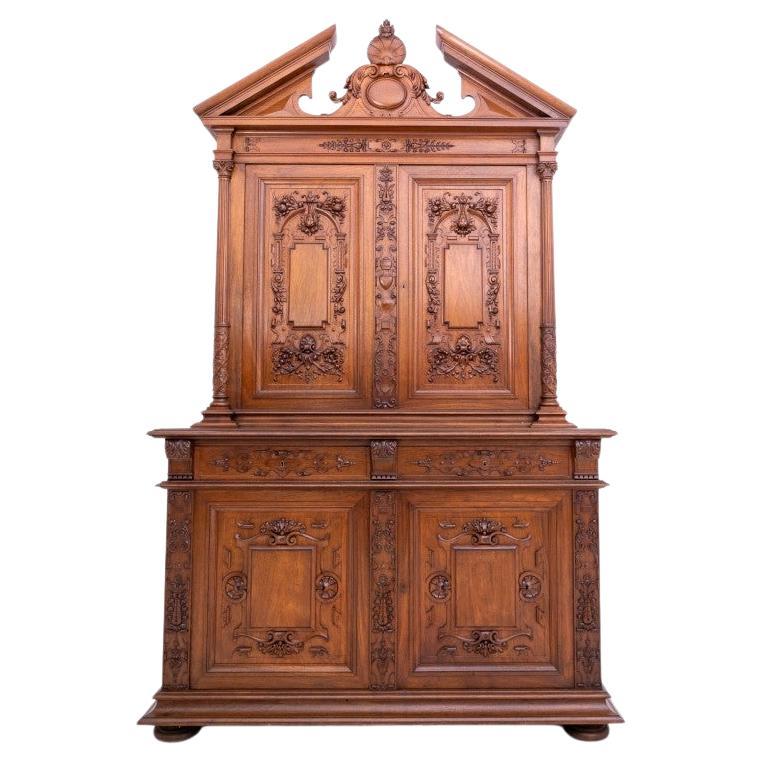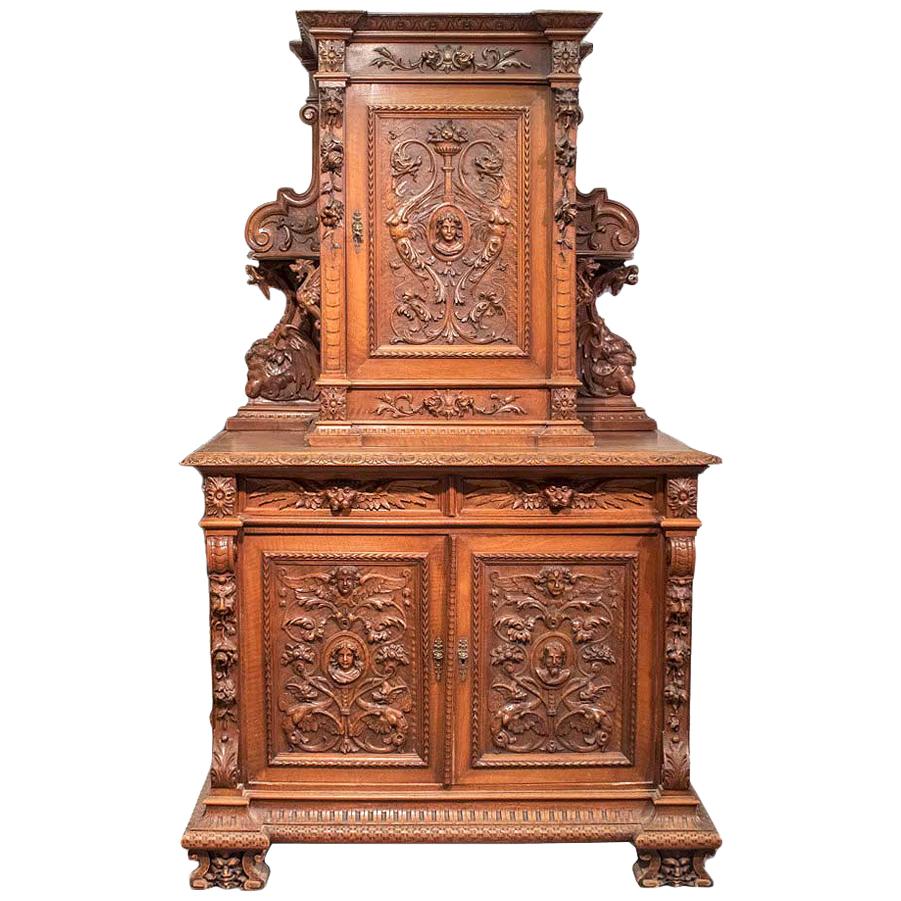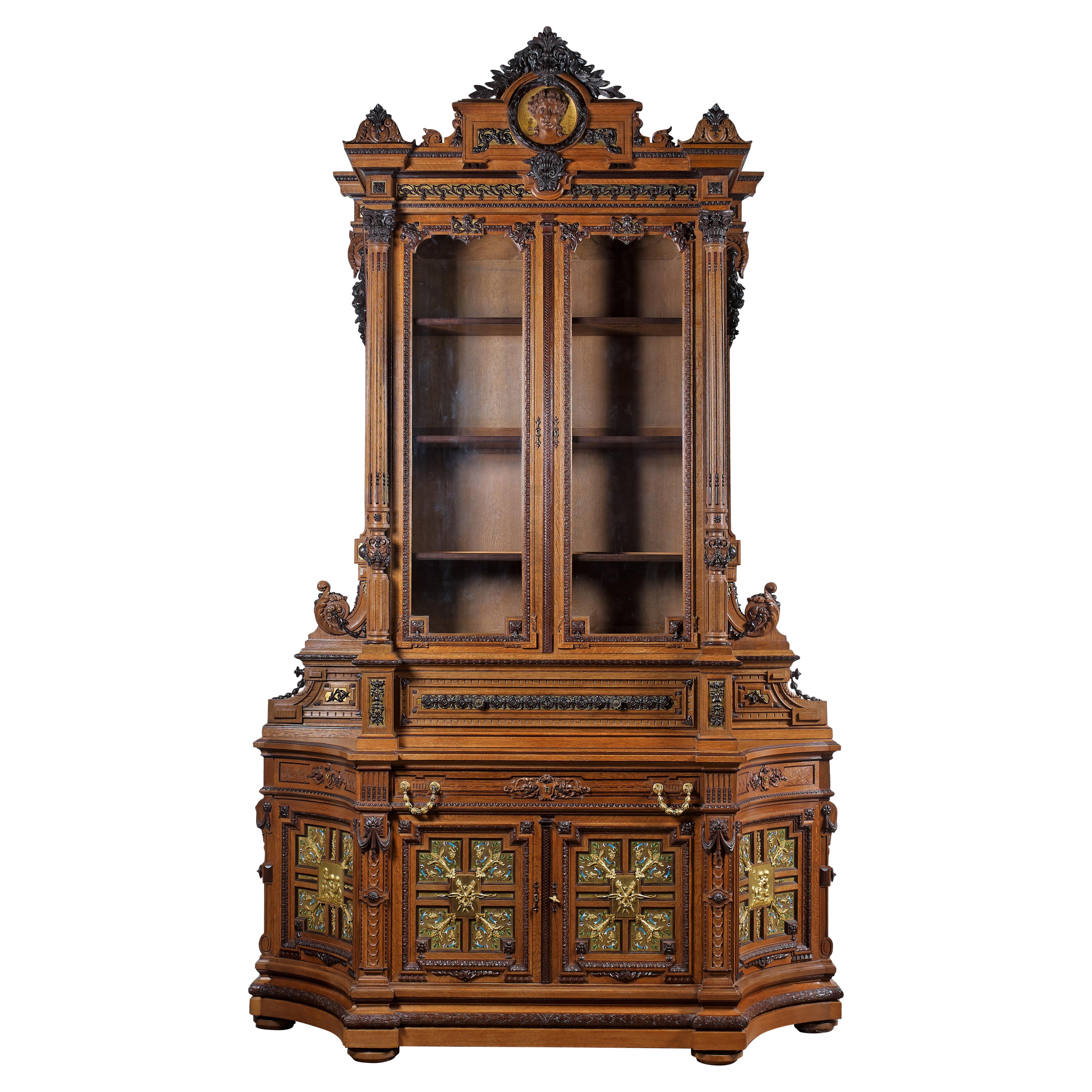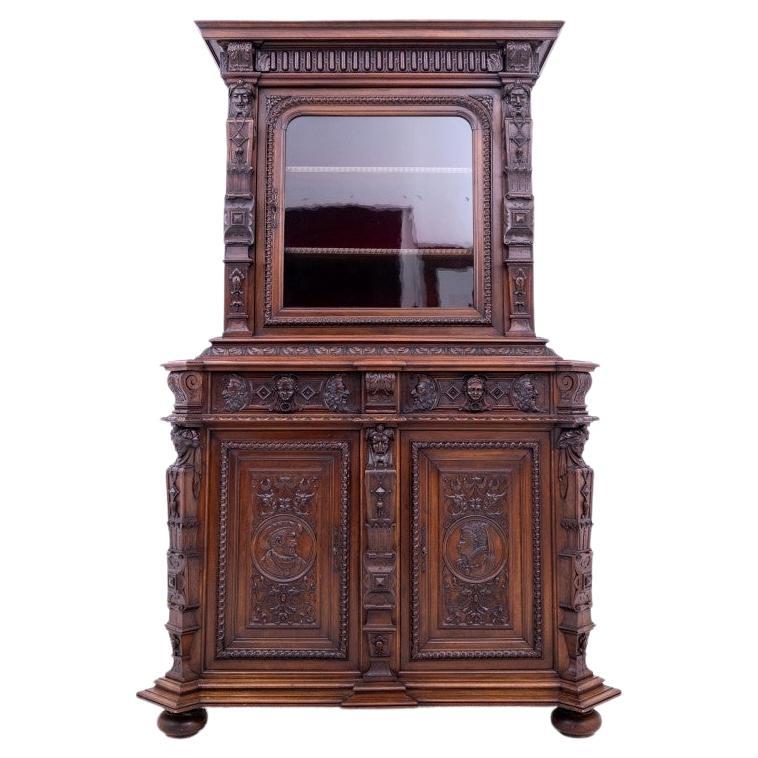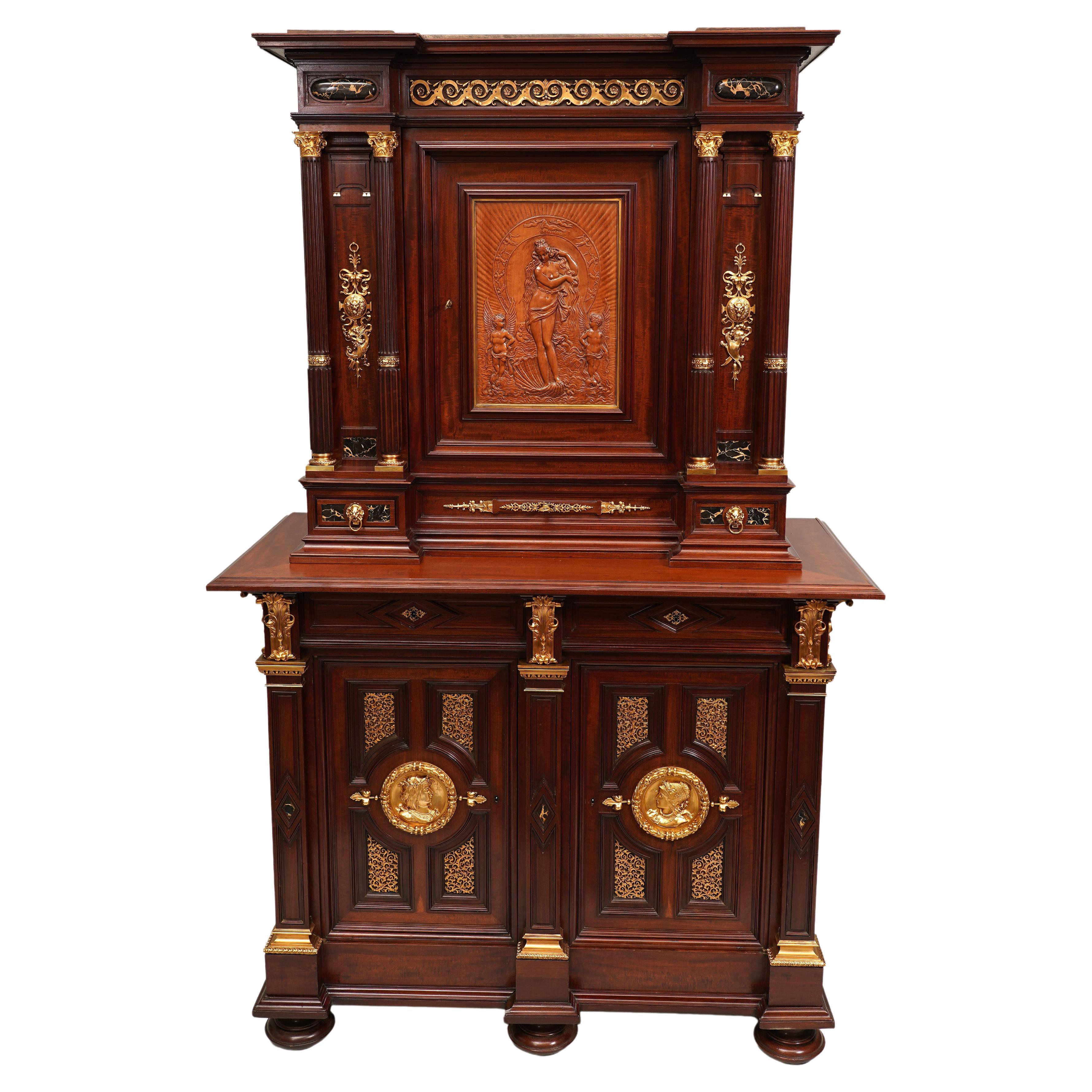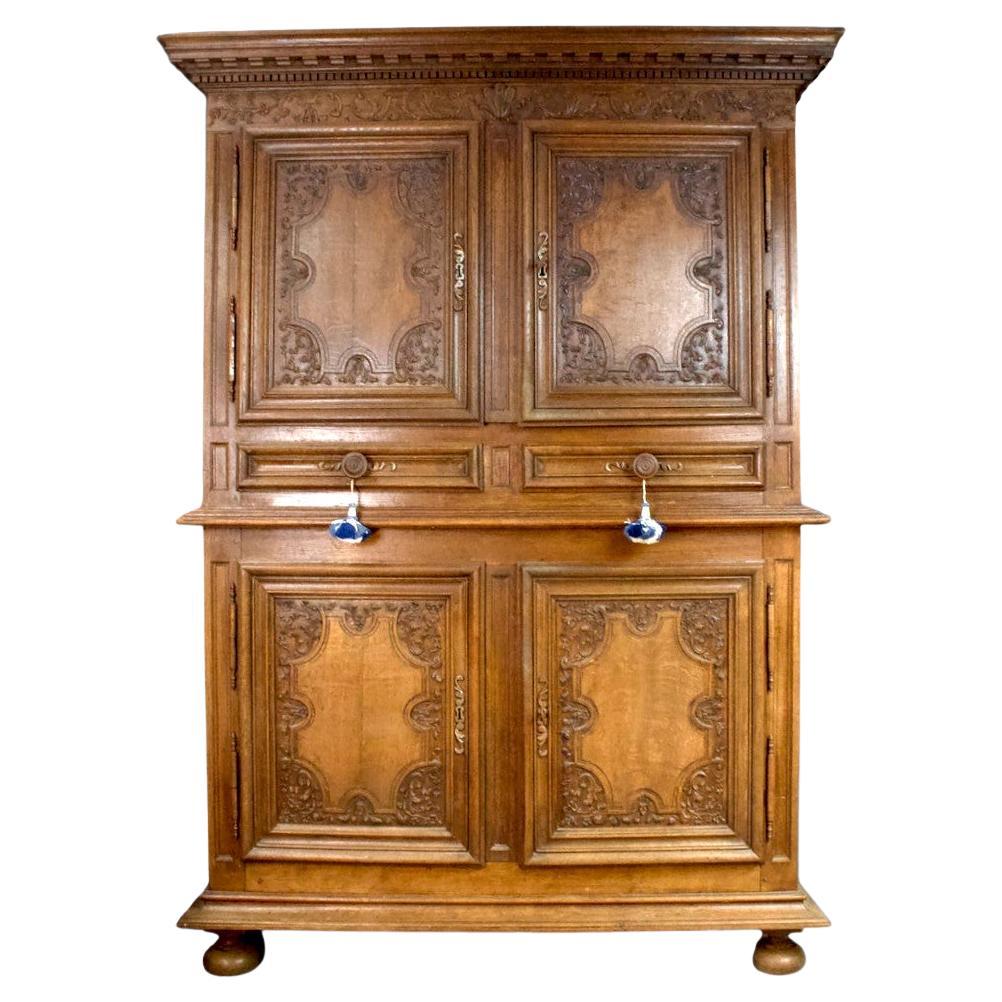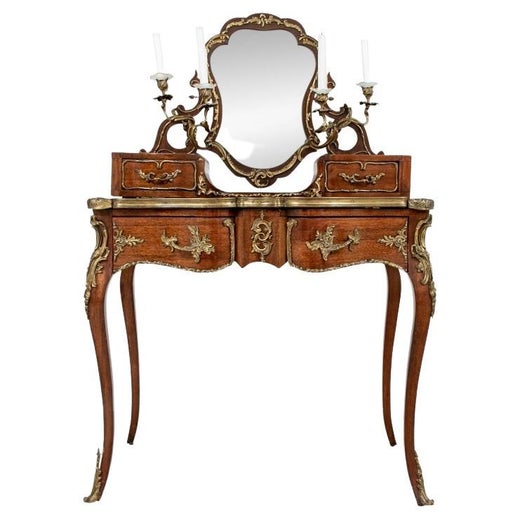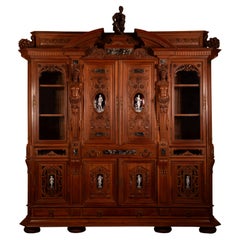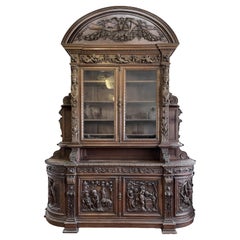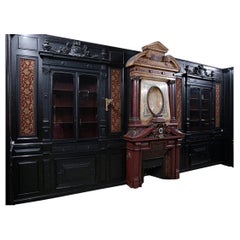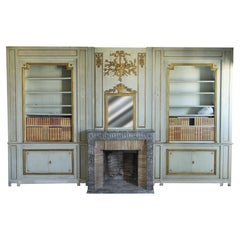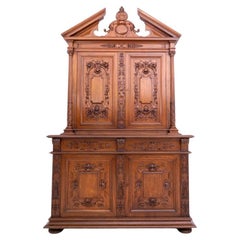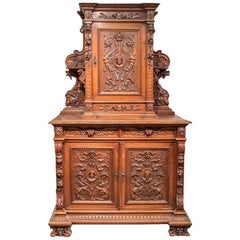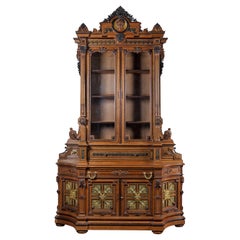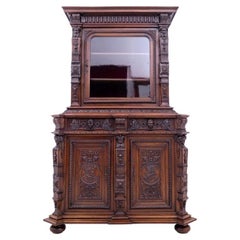Édouard LIÈVRE, Paul SORMANI, Neo-Renaissance ceremonial sideboard and buffet
About the Item
- Creator:Paul Sormani (Cabinetmaker),Edouard Lievre (Cabinetmaker)
- Dimensions:Height: 103.15 in (262 cm)Width: 90.56 in (230 cm)Depth: 25.99 in (66 cm)
- Style:Renaissance Revival (Of the Period)
- Materials and Techniques:
- Place of Origin:
- Period:
- Date of Manufacture:Between 1870 and 1875
- Condition:
- Seller Location:SAINT-OUEN-SUR-SEINE, FR
- Reference Number:Seller: 109171stDibs: LU7662244030792
Paul Sormani
Paul Sormani, counted among the most elite Parisian ébénistes of the 19th century, used the foundation of Louis XV and XVI styles for his meubles de luxe (luxurious furnishings).
Sormani received enormous attention as one of Paris’ finest and most influential ébénistes and earned worldwide acclaim by displaying his pieces at many of the world’s leading exhibitions. At the 1867 Exhibition Universelle in Paris the celebrated designer received an award and was described in the exhibition journal as “...a distinguished ébéniste of Paris, whose works deservedly attracted the attention of the public, and received the marked approval of the connoisseur.”
Empress Eugénie, wife of Napoleon III, decorated her palaces with beautiful creations by Paul Sormani whose designs were of a select few favored by the Empress. Revivals of Louis XV and XVI pieces were in high demand among affluent Parisians, and Sormani created many of the finest and most important furnishings of the period.
Find authentic Paul Sormani case pieces and storage cabinets, tables and other furniture on 1stDibs.
(Biography provided by M.S. Rau)
- ShippingRetrieving quote...Shipping from: Revin, France
- Return Policy
More From This Seller
View AllAntique 19th Century French Renaissance Revival Bookcases
Enamel
Antique 19th Century French Napoleon III Bookcases
Oak
20th Century French Napoleon III Panelling
Bronze
Vintage 1950s French Louis XVI Panelling
Wood
Antique 1890s French Renaissance Revival Furniture
Marble, Bronze
Antique 19th Century French Napoleon III Fireplaces and Mantels
Walnut
You May Also Like
Antique Late 19th Century French Renaissance Cabinets
Glass, Walnut
Antique Late 19th Century Renaissance Revival Buffets
Walnut
Antique 1860s French Renaissance Sideboards
Enamel, Bronze
Antique Late 19th Century French Renaissance Cabinets
Walnut, Glass
Antique 1870s French Renaissance Cabinets
Marble, Bronze
Antique Late 17th Century French Louis XIV Wardrobes and Armoires
Wood
